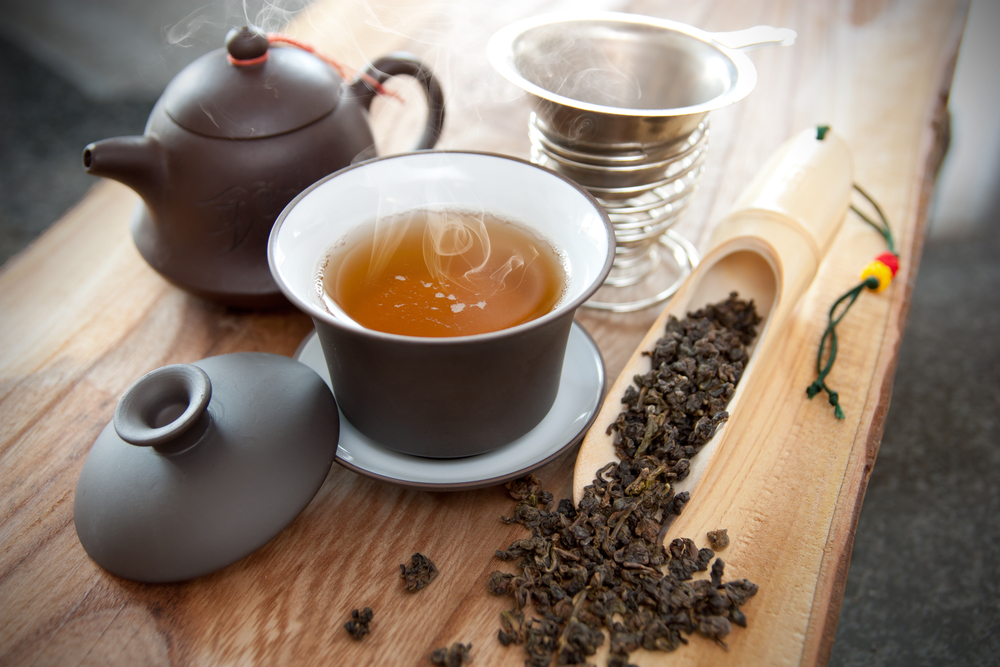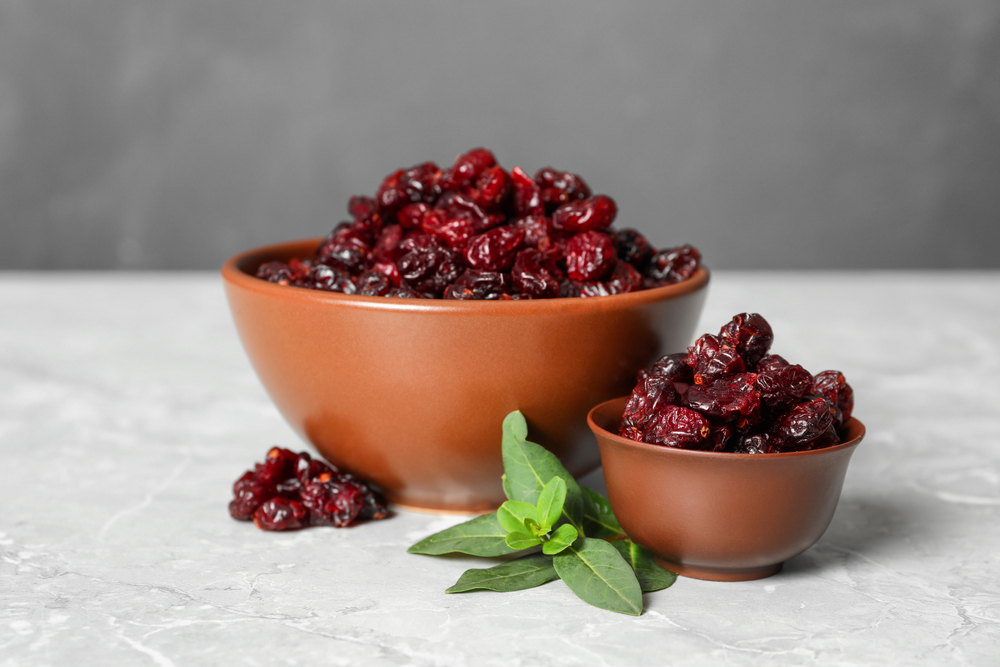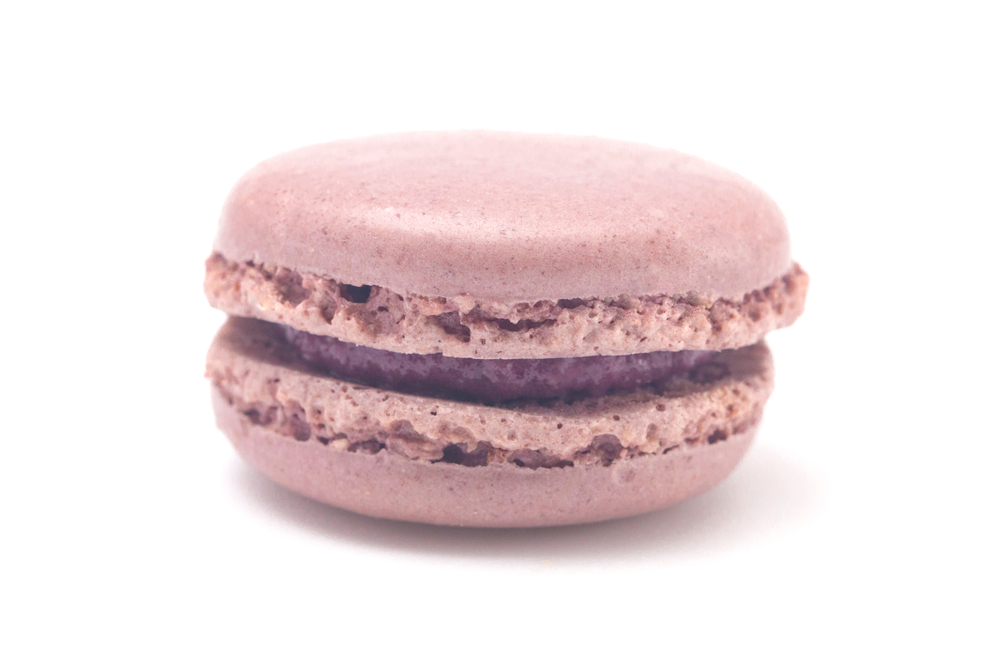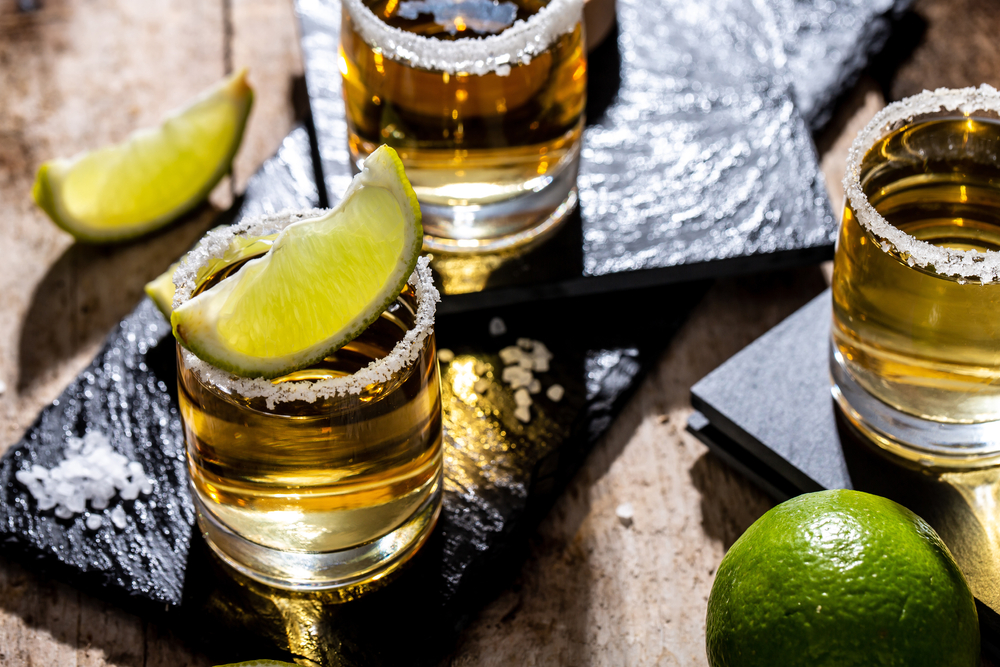I have always been curious about the taste of hibiscus. This vibrant flower is not only beautiful but also has a unique flavor profile that has been enjoyed in many cultures for centuries. Hibiscus is used in various culinary applications, from teas and cocktails to jams and glazes. So, what does hibiscus taste like?
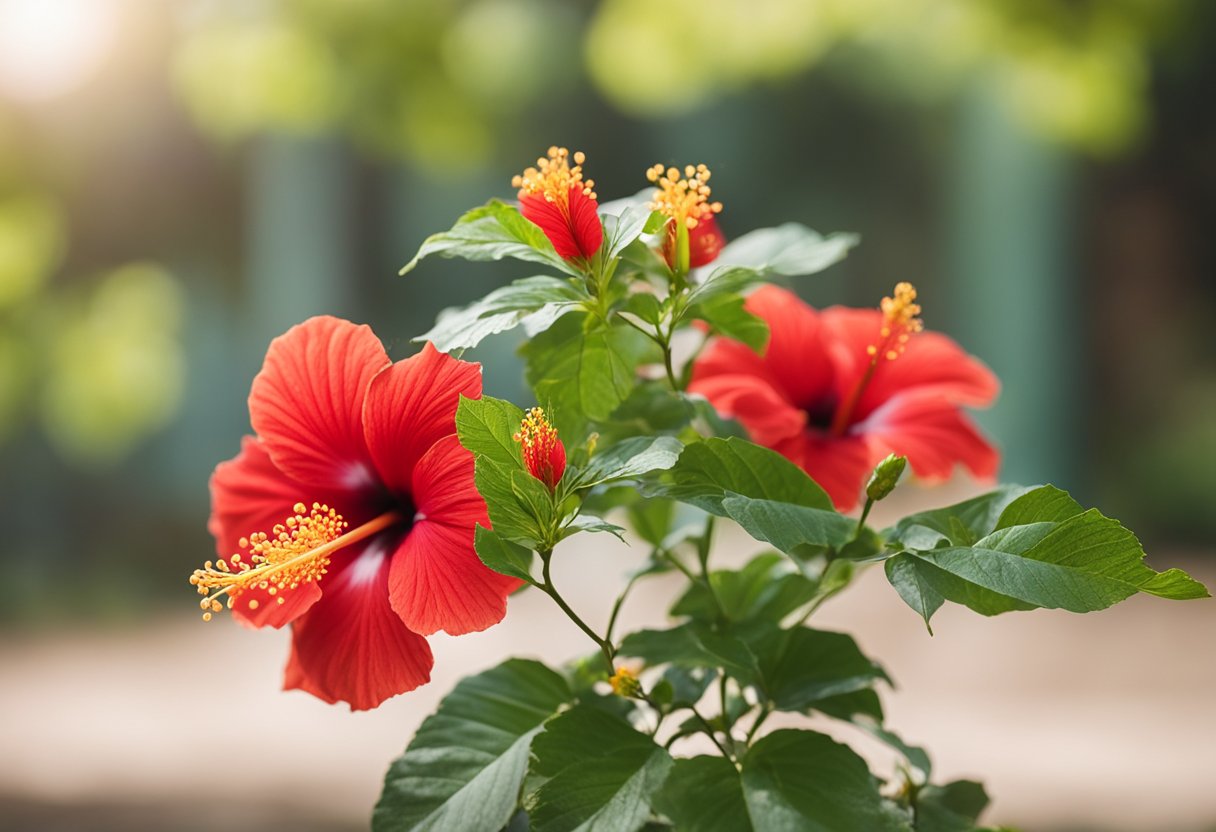
Hibiscus has a tangy, tart, floral, and earthy flavor with a hint of sweetness and fruitiness. It tastes similar to pomegranates and cranberries, making it a perfect addition to sweet and savory dishes.
Some people may find it an acquired taste due to its sourness, but those who enjoy a tart, fruity flavor will likely enjoy this unique plant.
Hibiscus is not only delicious but also has numerous health benefits. It is rich in antioxidants and has been shown to improve heart health and lower blood pressure. With its unique taste and health benefits, hibiscus is a versatile ingredient that can be enjoyed in various forms.
Hibiscus: An Overview
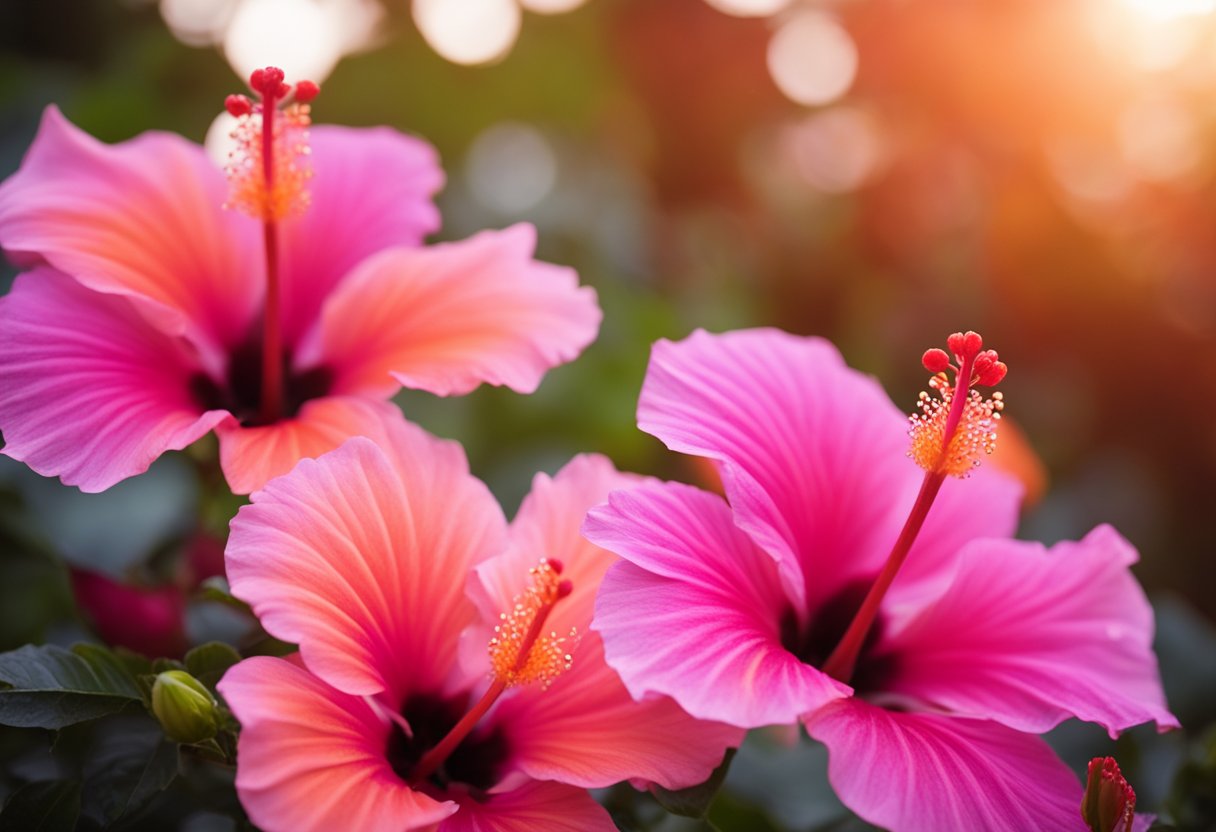
As someone who has tasted hibiscus before, I can confidently say that it has a unique and distinct flavor that sets it apart from other plants. Hibiscus is a flowering plant that belongs to the mallow family and is native to tropical regions.
It is commonly known for its beautiful, vibrant flowers that come in a range of colors, including red, pink, orange, and yellow.
Despite being known for its flowers, hibiscus is also used in culinary applications, particularly in teas and beverages. The plant’s calyces, which are the fleshy structures that surround the flower’s base, are commonly used to make tea, which has a tart, tangy flavor with subtle floral and fruity notes.
Hibiscus tea is popular in many cultures and is often consumed for its various health benefits, including its high antioxidant content. In addition to tea, hibiscus is also used in other culinary applications, such as jams, syrups, and glazes for meats.
Overall, hibiscus is a versatile plant that has a unique flavor profile that is both tart and floral. Its popularity in culinary applications continues to grow, and it is a great ingredient to experiment with in the kitchen.
The Taste Profile of Hibiscus
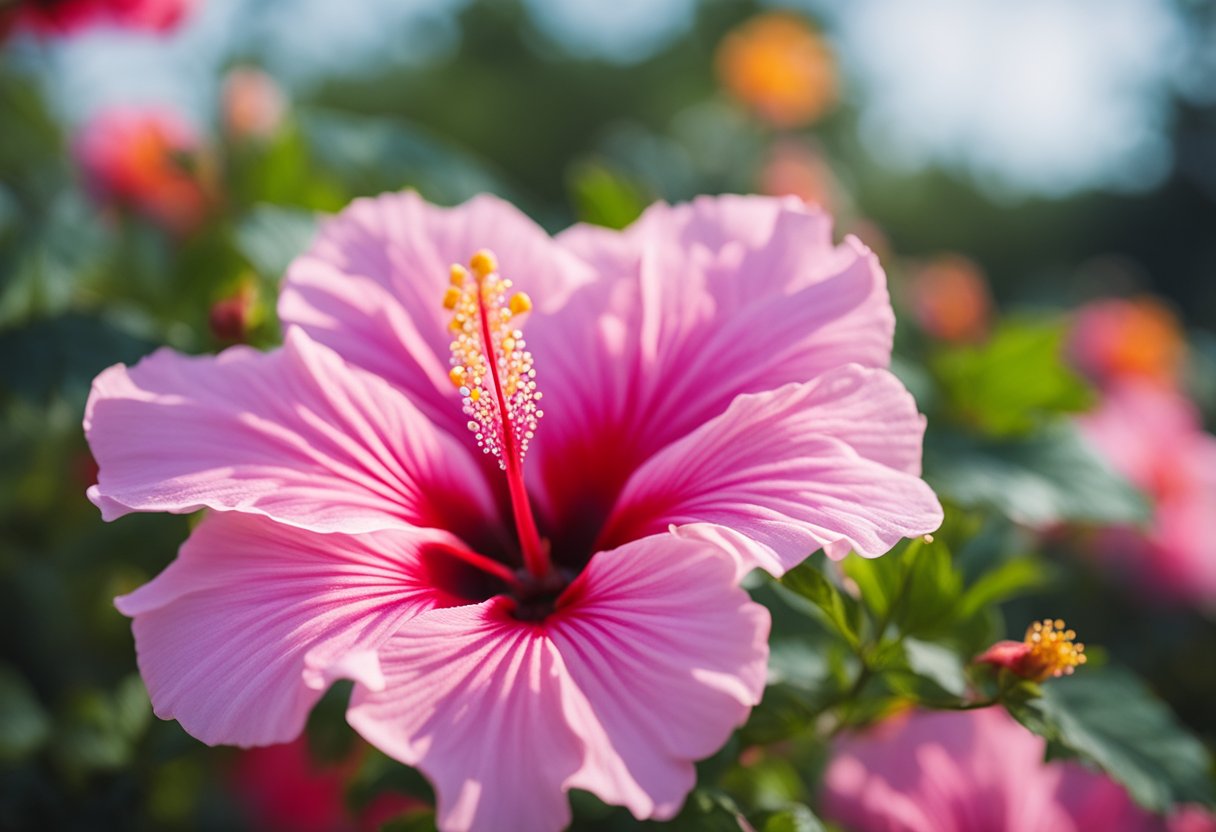
As someone who has tasted hibiscus in various forms, I can confidently say that hibiscus has a unique taste profile. The taste of hibiscus is often described as sour, tart, and fruity with floral notes. It has a slightly sweet aftertaste that balances out the sourness.
When you taste hibiscus, you’ll notice that it has a tangy and refreshing flavor that can be a bit sour. It tastes similar to tart fruits like pomegranate or cranberry, but with a distinct floral undertone.
The flavor can be quite strong, so it’s often used in small amounts to add a burst of flavor to dishes and beverages.
The flavor of hibiscus can vary depending on how it’s prepared. When brewed as tea, hibiscus has a more pronounced floral flavor with a slightly sweet aftertaste. When used in cooking, it can add a tangy and fruity flavor to dishes like jams, jellies, and glazes.
Overall, the taste of hibiscus is unique and can be an acquired taste for some people. However, if you enjoy sour and tangy flavors with a hint of floral sweetness, then hibiscus is definitely worth trying.
Hibiscus Tea: A Unique Beverage
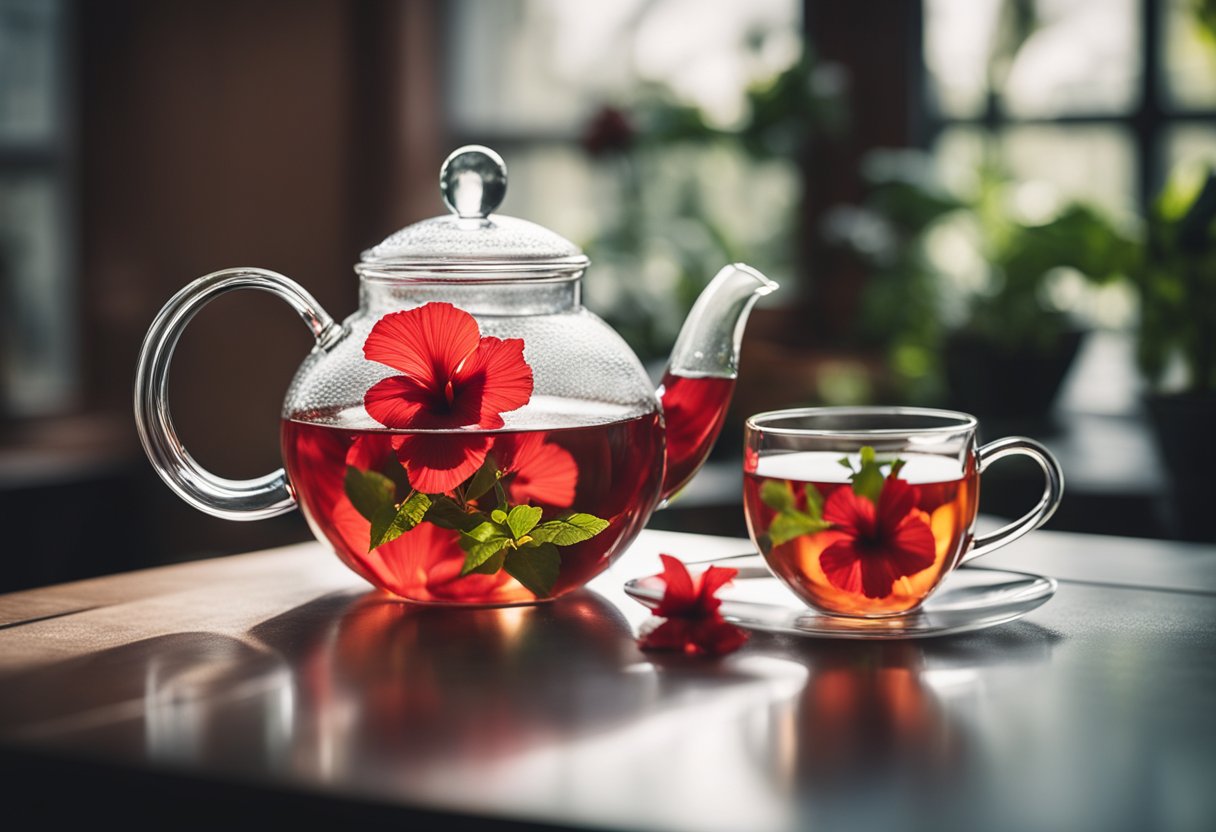
I have always been a tea lover, trying out different teas from around the world. One of the most unique teas I have come across is hibiscus tea.
Hibiscus tea is a herbal tea made from the dried calyces of the hibiscus flower. The tea has a beautiful red color and a refreshing taste that makes it a perfect beverage to serve both hot and cold.
The flavor profile of hibiscus tea is quite unique. It has a tart flavor that is similar to cranberry or pomegranate juice.
Depending on how it is brewed, it can be somewhat tart or sweet, but always flavorful and comforting. The tea has a floral aroma that is quite pleasant and adds to the overall experience of drinking it.
One of the things I love about hibiscus tea is that it is caffeine-free, making it a perfect tea to drink at any time of the day. It is also a great alternative to sugary drinks, as it has a natural sweetness that comes from the hibiscus flower.
Hibiscus tea is a versatile tea that can be served both hot and cold. When served hot, it is a perfect tea to enjoy on a cold winter day. When served cold, it is a refreshing drink that is perfect for a hot summer day. It is also a great tea to use in cocktails or mocktails, as it adds a unique flavor to any drink.
In conclusion, hibiscus tea is a unique beverage that is worth trying out. It has a tart flavor profile, a beautiful red color, and a refreshing taste that makes it a perfect beverage to serve both hot and cold. It is a great alternative to sugary drinks and a perfect tea to drink at any time of the day.
The Role of Ingredients in Hibiscus Flavor
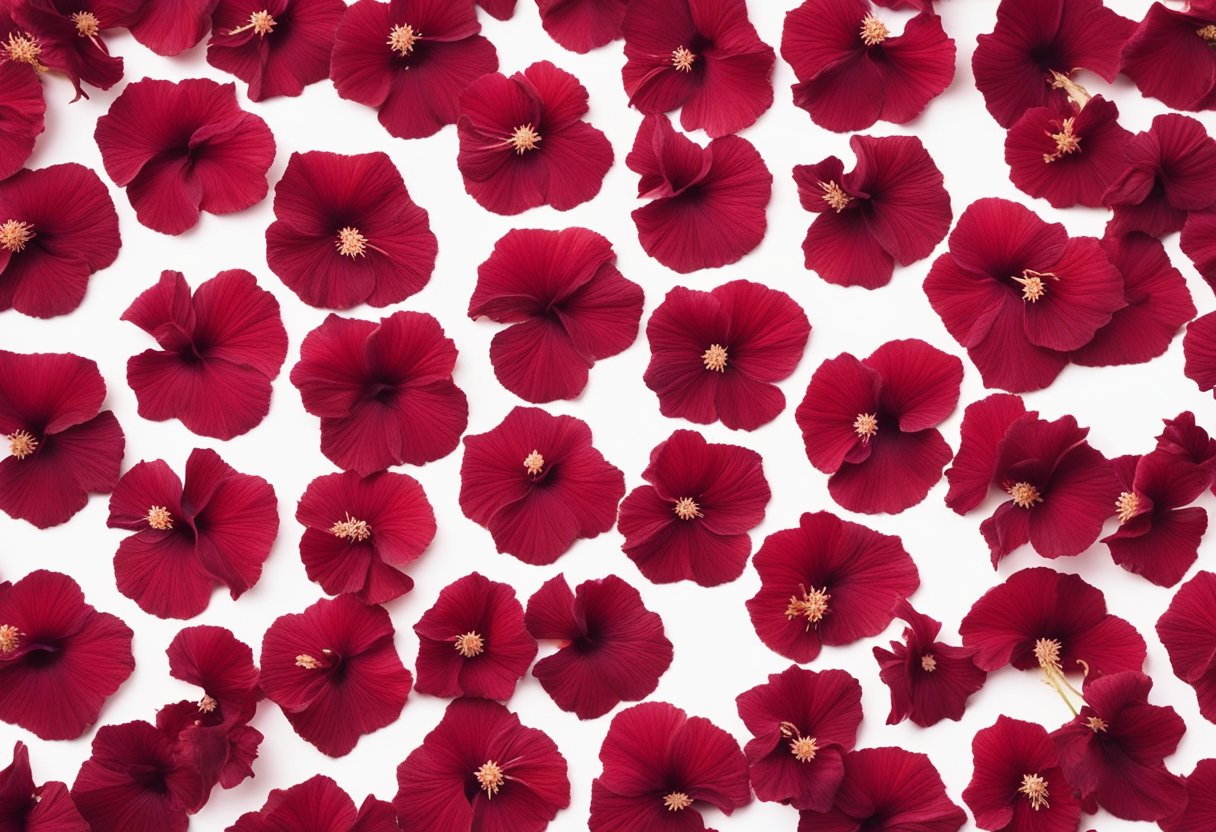
As someone who has tasted hibiscus, I can confidently say that it has a unique flavor that is both tart and floral. However, the flavor of hibiscus can be influenced by the addition of certain ingredients.
Here are some ingredients that can affect the taste of hibiscus:
- Sugar: Adding sugar to hibiscus can help to balance out its tartness and enhance its sweetness. However, it’s important to note that too much sugar can overpower the natural flavor of hibiscus.
- Ginger: Adding ginger to hibiscus can give it a spicy kick and add complexity to its flavor profile. Ginger can also help to soothe the digestive system and provide anti-inflammatory benefits.
- Honey: Like sugar, honey can help to sweeten hibiscus and balance out its tartness. However, honey also has its own distinct flavor that can complement the floral notes of hibiscus.
- Lemon: Adding lemon to hibiscus can give it a bright, citrusy flavor that can help to cut through its tartness. Lemon can also provide a boost of vitamin C and other antioxidants.
- Sweeteners: There are many different types of sweeteners that can be used with hibiscus, including stevia, agave nectar, and maple syrup. Each sweetener has its own unique flavor profile and can affect the overall taste of hibiscus in different ways.
In conclusion, the flavor of hibiscus can be influenced by a variety of ingredients, including sugar, ginger, honey, lemon, and sweeteners. By experimenting with different ingredients, you can create a hibiscus beverage that is perfectly tailored to your taste preferences.
Culinary Uses of Hibiscus
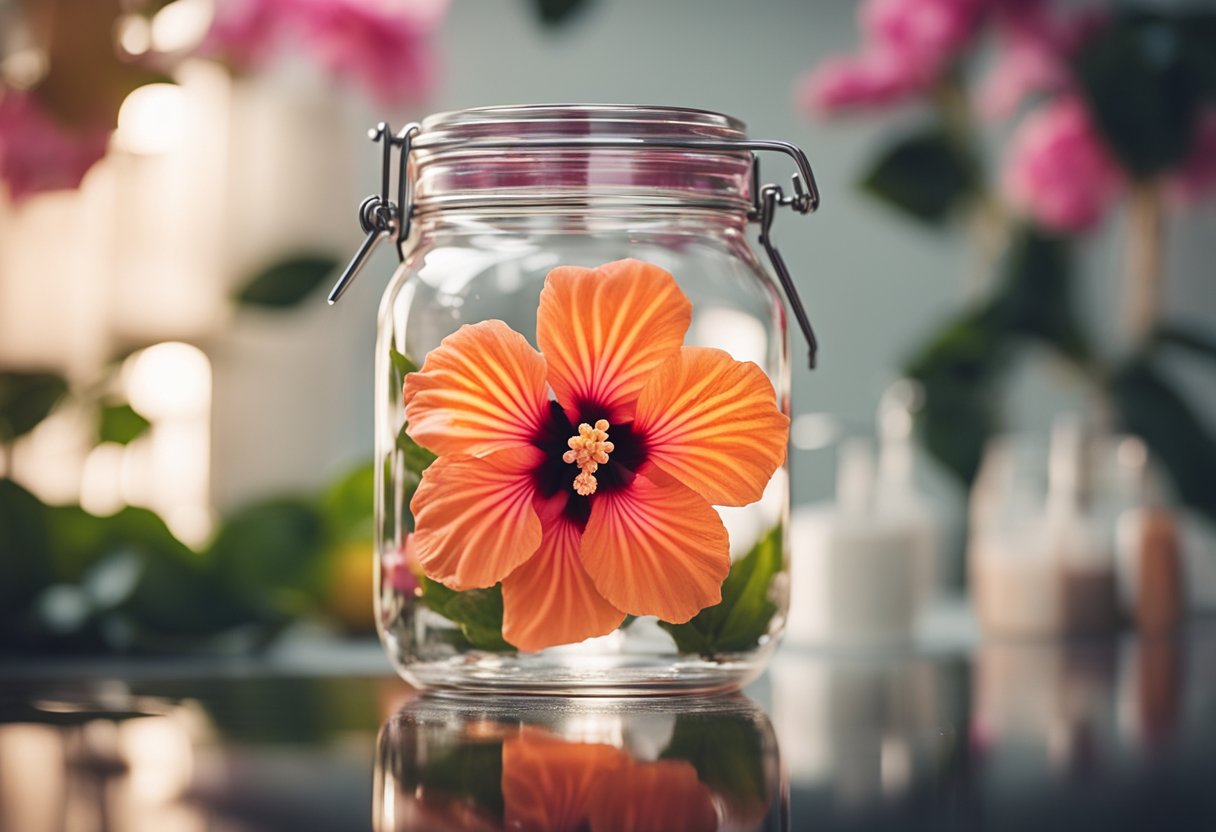
As an ingredient, hibiscus is versatile and can be used in a variety of culinary applications. Its sweet and tart flavor profile with floral and fruity notes makes it a popular choice for both sweet and savory dishes.
One of the most popular uses of hibiscus is in beverages. Hibiscus tea is a refreshing and healthy option that can be enjoyed hot or cold. It is also a common ingredient in smoothies and cocktails, adding a unique flavor and vibrant color.
Hibiscus can also be used to make jams, jellies, and syrups, which are perfect for spreading on toast or adding to desserts. Its tartness pairs well with sweet fruits like strawberries and raspberries, making it a popular ingredient in fruit salads and desserts.
In addition to its culinary uses, hibiscus can also be used as a natural food coloring. Its bright red color can be used to add a pop of color to dishes like rice, sauces, and even sorbet.
Hibiscus seeds are also edible and can be used in a variety of dishes. They can be roasted and added to salads or used as a garnish for soups and stews. They can also be ground into a powder and used as an ingredient in baked goods.
Overall, hibiscus is a versatile ingredient that can add a unique flavor and vibrant color to a variety of dishes. Its sweet and tart flavor profile with floral and fruity notes make it a popular choice for both sweet and savory applications.
Health Benefits of Hibiscus
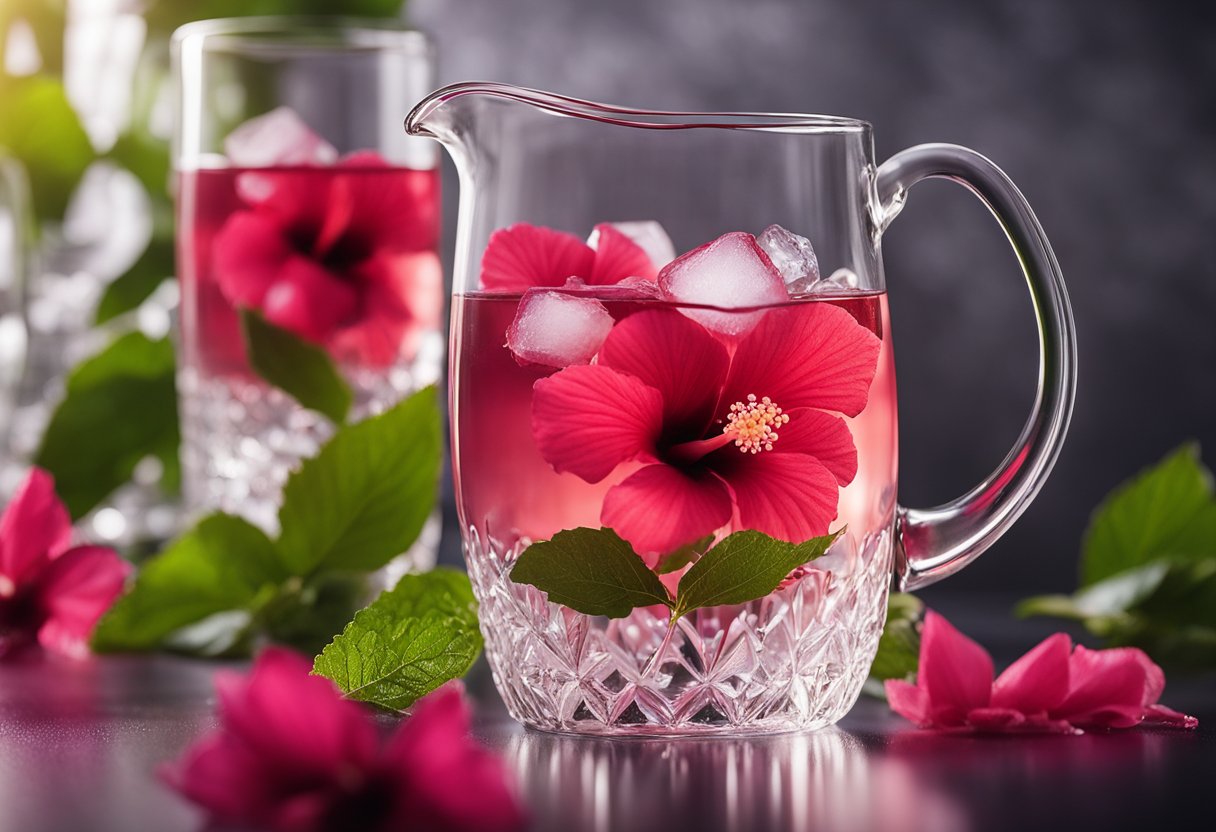
As someone who has enjoyed hibiscus tea for years, I am happy to report that it not only tastes great but also has a range of potential health benefits. Here are some of the reasons why you might want to incorporate hibiscus into your diet:
Antioxidants
Hibiscus is packed with antioxidants, which help to neutralize free radicals in the body. Free radicals are unstable molecules that can damage cells and contribute to aging and disease.
By consuming hibiscus, you can help protect your body against these harmful molecules.
Blood Pressure
Studies have suggested that hibiscus may help to lower blood pressure in people with hypertension. One study found that drinking hibiscus tea for six weeks led to a significant reduction in systolic blood pressure compared to a placebo group.
While more research is needed, this suggests that hibiscus may be a useful addition to a blood pressure-lowering diet.
Cholesterol
Hibiscus may also help to improve cholesterol levels in the body. One study found that consuming hibiscus extract for 12 weeks led to a significant reduction in total cholesterol, LDL cholesterol, and triglycerides.
This suggests that hibiscus could be a useful tool in managing cholesterol levels.
Vitamin C
Hibiscus is a great source of vitamin C, which is an essential nutrient for immune function, skin health, and more. Just one cup of hibiscus tea contains around 30% of your daily recommended intake of vitamin C, making it a convenient and tasty way to boost your nutrient intake.
Weight Loss
While more research is needed, some studies have suggested that hibiscus may help to promote weight loss. One study found that hibiscus extract was able to reduce body fat in overweight individuals. This could be due to the high fiber content of hibiscus, which can help to keep you feeling full and satisfied.
Overall, hibiscus is a delicious and potentially beneficial addition to your diet. Whether you enjoy it as a tea, in a smoothie, or as part of a meal, hibiscus could help to support your health in a range of ways.
Hibiscus Around the World

As a versatile ingredient, hibiscus is used in many different cultures around the world. Hibiscus sabdariffa, also known as roselle, is a popular variety of hibiscus used in many culinary applications.
In Mexico, dried hibiscus is used to make agua de Jamaica, a refreshing drink made with lime and sugar. In India, hibiscus is used in chutneys and curries, while in Thailand it is used in salads and soups.
Hibiscus has a tart and sour taste with a hint of sweetness and fruitiness, similar to cranberries and pomegranates. This unique flavor profile makes it an excellent addition to many dishes and beverages.
In Africa, hibiscus is used to make a refreshing drink called bissap, made from the calyx of the hibiscus flower. In Nigeria, hibiscus is used to make a tangy sauce called zobo.
Hibiscus comes in many different colors, including pink, white, and red. The sepals of the hibiscus flower are used in cooking and have a tangy flavor that can add a unique twist to many dishes.
Hibiscus is also rich in polyphenols, which are beneficial for heart health, and calcium, which is essential for strong bones.
Overall, hibiscus has a unique taste that is both tart and fruity. It is used in many different cultures around the world and can be found online or in specialty stores. When using hibiscus in cooking or beverages, it is important to note that it can leave a slightly astringent aftertaste.
Scientific Research on Hibiscus
I have conducted research on hibiscus to better understand its taste and potential health benefits. Hibiscus is a plant that is used in many cultures for medicinal purposes, as well as for its pleasant taste.
The plant contains anthocyanins, which are pigments that give it its bright red color and are also known for their antioxidant properties.
Test-tube studies have shown that hibiscus extract has the potential to reduce inflammation, lower blood pressure, and improve liver health. However, more research is needed to determine whether these effects translate to humans.
It is important to note that the majority of studies on hibiscus have been conducted on animals or in test tubes, and more human studies are needed to fully understand its effects.
One study published in the Journal of Nutrition found that hibiscus tea may help reduce cholesterol levels in people with type 2 diabetes. Another study published in the Journal of Ethnopharmacology found that hibiscus extract may have potential as a natural treatment for depression.
While these findings are promising, it is important to note that more research is needed to fully understand the potential health benefits of hibiscus. It is also important to speak with a healthcare professional before using hibiscus for medicinal purposes.
In terms of taste, hibiscus has a sour, tart flavor that can be described as similar to cranberries or cranberry juice. It tastes great in sweet and savory dishes, and is often used to make tea. Overall, hibiscus is a flavorful and potentially beneficial plant that is worth exploring further.
Precautions with Hibiscus Consumption
As with any food or drink, it’s important to be aware of potential precautions when consuming hibiscus.
Here are a few things to keep in mind:
- Pregnancy: Pregnant women should be cautious when consuming hibiscus, as it has been known to stimulate menstruation and potentially cause miscarriage. It’s best to avoid hibiscus during pregnancy or consult with a healthcare professional before consuming it.
- Medication Interactions: Hibiscus may interact with certain medications, including those for high blood pressure and diabetes. If you are taking medication, it’s important to speak with a healthcare professional before consuming hibiscus to ensure there are no negative interactions.
- Allergies: While rare, some people may be allergic to hibiscus. Symptoms of an allergic reaction may include itching, hives, and difficulty breathing. If you experience any of these symptoms after consuming hibiscus, seek medical attention immediately.
- Digestive Issues: Consuming large amounts of hibiscus may cause digestive issues such as upset stomach, gas, and constipation. It’s important to consume hibiscus in moderation and speak with a healthcare professional if you experience any digestive issues after consuming it.
In general, hibiscus is considered safe for most people when consumed in moderation. However, it’s important to be aware of potential precautions and speak with a healthcare professional if you have any concerns.
Frequently Asked Questions
What are the benefits of drinking hibiscus tea?
Hibiscus tea is rich in antioxidants and can help lower blood pressure and cholesterol levels. It also has anti-inflammatory properties and can aid in digestion.
What are some recipes that use dried hibiscus flowers?
Dried hibiscus flowers can be used in a variety of recipes, including hibiscus tea, hibiscus jam, hibiscus syrup, and even hibiscus-glazed meat.
How can I enhance the taste of hibiscus tea?
To enhance the taste of hibiscus tea, you can add honey or sugar to sweeten it. You can also add lemon or lime juice for a tangy flavor.
Is hibiscus safe to consume?
Hibiscus is generally safe to consume, but it may interact with certain medications. It’s best to consult with a healthcare professional before consuming hibiscus if you are taking any medications.
What are some popular drinks that include hibiscus?
Some popular drinks that include hibiscus are hibiscus tea, hibiscus smoothies, and hibiscus cocktails.
What are some flavor profiles that are similar to hibiscus?
Hibiscus has a tangy, tart, and floral flavor with a hint of sweetness and fruitiness. Some flavor profiles that are similar to hibiscus are pomegranates and cranberries.



